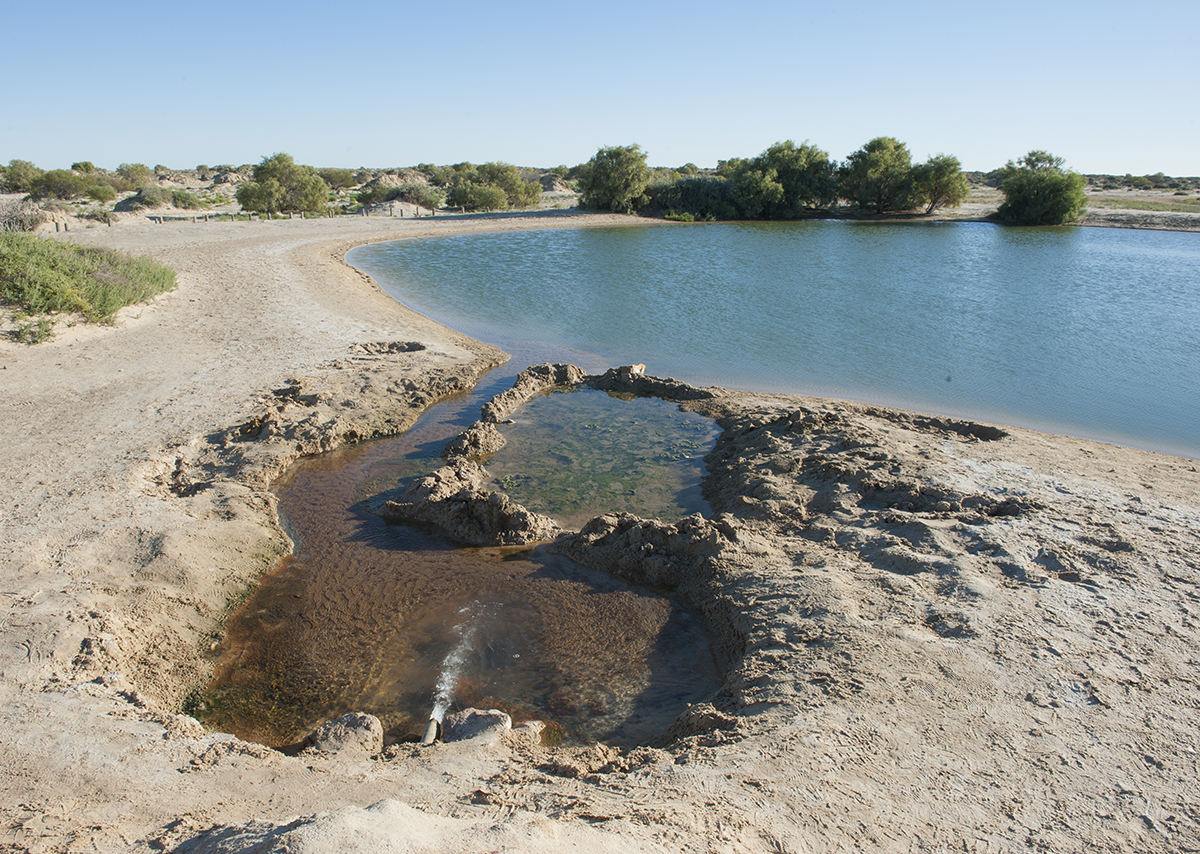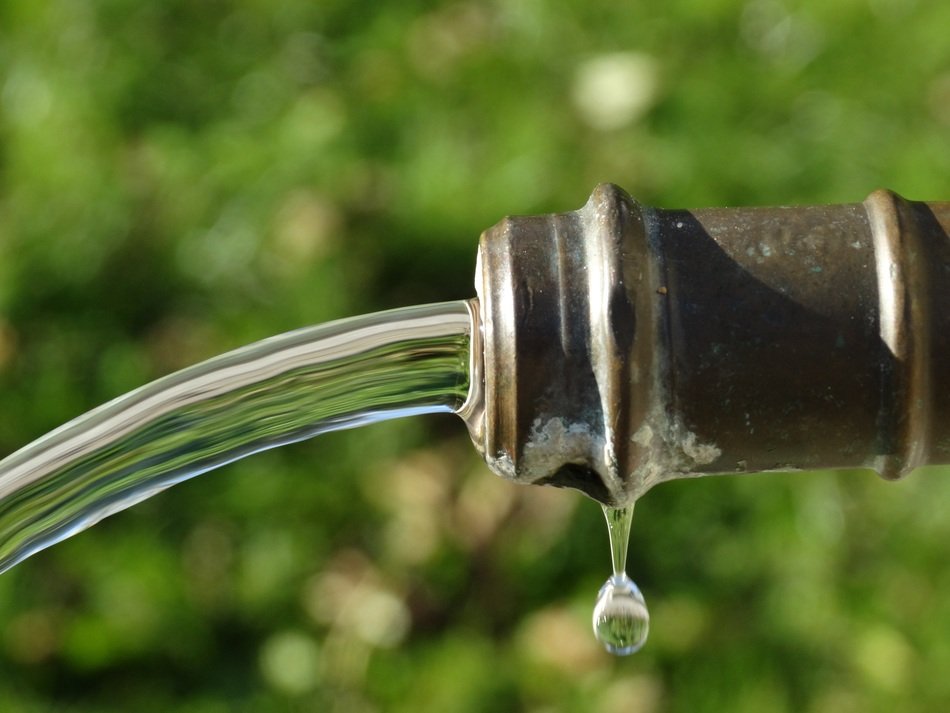WATER E-JOURNAL 2020

Monitoring Cyanobacteria in Grahamstown Dam
V.Shah, D.Turner, C.Hancock, P.O’Donoghue, A.Sneddon, J.Stanmore, A.Morrow, A.Lundmark, J.Bates, A.Hanson
Grahamstown Dam (capacity about 182,000 ML), Hunter Water’s largest dam, is a broad, relatively shallow, man-made, off-river storage that is primarily used to…
Read Full Paper
Hybrid machine learning process improves operations in South Australian trial
K Braun, J Klaric, J Ireland
TRILITY has developed a production cloud data management solution, KOIOS DatalytiX to provide hybrid machine learning applications and deterministic modelling tools to its operations, asset management, and…
Read Full Paper
PFAS in biosolids: A review of international regulations
H Hall, D Moodie, C Vero
Per- and polyfluoroalkyl substances (PFAS) are incredibly useful additives, often providing excellent surface tension-lowering properties to a material. Due to the extensive use of PFAS in daily life in developed countries PFAS invariably collects…
Read Full Paper
Sensitivity analysis accurately directs water-loss reduction interventions
E Johnson
Water supply and delivery inefficiencies increase the overall costs of water distribution networks, which is ultimately paid for by the customer through increased water prices or by society through cross-subsidisation…
Read Full Paper
Australian exemplars of sustainable and economic managed aquifer recharge
J.Vanderzalm, B.Naumann, S.Higginson, D.Page, A.Jones, V.Moscovis, S.Hamilton, D.Gonzalez, G.Dandy, K.Barry, P.Dillon, H.Prommer, M.Donn
Managed aquifer recharge (MAR) can improve water security by using aquifers to store water…
Read Full Paper
Working with community and council: The Kirirri story
C Beal, B Dorante, P Pearson, S Aldirawi, N Abdallah
Ensuring safe, accessible and acceptable drinking water in remote communities in Australia requires culturally and socially appropriate, technically feasible and economically viable approaches. Arguably…
Read Full Paper
Data-driven water quality prediction in chloraminated systems
A Peters, B Liang, H Tian, Z Li, C Doolan, D Vitanage, H Norris, K Simpson, Y Wang, F Chen
One critical aspect of overall water supply management is to monitor drinking water quality across the entire water delivery network. Compared with a model-based approach for water…
Read Full Paper
Effective monitoring of trihalomethanes in water supply systems
A Sathasivan, G Kastl, I Fisher
To ensure public health safety, water supplied to consumers should meet both microbiological and disinfection by-product (DBP) requirements. Water utilities are ensuring microbiological safety of water, but there …
Read Full Paper
Using artificial intelligence to improve pipe condition assessment
Q Bechet, X Philoleau, M Mellado-Ruiz, A Siqueira, M Aguilar
Inspection and condition assessments of network infrastructure are critical for water utilities and city councils to ensure the structural integrity and functionality of sewer pipes and…
Read Full Paper
Contaminants of emerging concern
L Kuskopf, M Sheehan, A Whelan
There are potentially many thousands of municipally derived contaminants of emerging concern (CECs) present in discharged wastewaters that may cause adverse effects in receiving aquatic environments…
Read Full Paper
Innovation through collaboration
L Powell, HS Lim, I Brown, T Huang, N Munksgaard, M Randall, J Holdsworth, H Cook
With little data available on the quality of stormwater discharging from urban catchments to the Great Barrier Reef (GBR), the driver for the Smart…
Read Full Paper
Third pipe water recycling
D Livingston
Third pipe systems for recycled water are on the periphery of options for more resilient urban water management in the face of water scarcity. A number of schemes in the Australian water industry provide …
Read Full Paper
Indigenous water sensitive urban design
T Brockbank, E Afoa
The economic, social, amenity, and environmental values of water sensitive urban design (WSUD) are widely understood, often seen in practice, and well documented. However, cultural connection and indigenous knowledge within these…
Read Full Paper
Anaerobic Digestion and the Circular Economy
F Tessele, J B van Lier
A ‘systemic approach’ to the concept of acircular economyis essential, as it aims to consider the interactions and dependencies of every contributing factor in the production process rather than treating each one as a separate…
Read Full Paper
Enhancing Sydney Water’s leak prevention through acoustic monitoring
R Nikoloska, L Bykerk, D Vitanage, J V Miro, F Chen, Y Wang, B Liang, S Verma
Leaks and breaks pose a great challenge for every water network around the world. These challenges include disruptions to customer services, costly pipe maintenance and unaccounted water loss…
Read Full Paper
The Original Water Industry
M Frangos, B Moggridge, T Webb, T Bassani, P Duncan
This paper examines the notion of the original water industry, presenting the argument that there was in fact an original water industry of which Indigenous Australians were the…
Read Full Paper
Sustainability in infrastructure planning
A Reidy, B Mason
Sustainability is a lens for integrated analysis and decision making in public water infrastructure. Water projects are complex and form part of a wider network of services with linkages and inter-relationships across…
Read Full Paper
Characterising sources of groundwater contamination
W McCance, OAH Jones, A Surapaneni, M Currell
Assessing contamination impacts on groundwater resources to meet ongoing regulatory requirements can be difficult. This is particularly relevant for Wastewater Treatment Plants…
Read Full Paper
Exploring nutrient management practices
J Barnes, J Todhunter, R Wong
With increased pressure on wastewater utilities to accommodate population growth and pursue lower nutrient discharge targets, it is important to better understand the social and economic impacts of these drivers. This will ensure…
Read Full Paper
Feasibility of waste to energy at Gladstone Wastewater Treatment Plant
G Bharambe, C McKewen
Gladstone Regional Council (GRC) has recently developed a Biofutures Strategy for the Gladstone region. This strategy is in line with “Gladstone Region 2035 Vision” to achieve world-class environmental leadership to…
Read Full Paper
Educating customers on water consumption
L Roberts, J Stewart, Dr N Davis
Mackay Regional Council’s social marketing strategy was introduced to enable and support the implementation of a Demand Management Program. The strategy engaged and educated customers in the Mackay Region…
Read Full Paper
Managing electricity price volatility
A KremorM CruddenB Warman
Electricity prices and price volatility in the Australian National Electricity Market have both increased significantly over the past two years, driven by transformational changes to the electricity generation mix and fuel costs. Electricity costs represent…
Read Full Paper
Smart meter technology
K Davies, C Doolan, A Northam, R Shi
There is increasing pressure being placed on water resources globally, arising from external factors such as climate change impacts, changing community values, population growth and urbanisation. In response, there…
Read Full Paper
Modelling Western Australia’s water demand and supplies
D Ferguson
Sustained growth of Western Australia’s economy and population brought about a doubling of the state’s water use in the thirty years following 1985. Over the same period climate change intensified in the state’s south…
Read Full Paper
Community acceptance for indirect potable reuse
D Healy, D Middleton, A Salveson, D Owen, J Bishop, N Turner
Seqwater is beginning a three-year process to validate process performance and gain community acceptance and regulatory approval for indirect potable reuse through its Western Corridor Recycled Water Scheme. The current…
Read Full Paper
Next generation machine learning for urban water management
K.Nguyen, R.Stewart, H.Zhang, C.Jones, N.Siriwardene, A.Brown, A.Radion, J.Crook, M.Stevens, N.Smith, D.Giurco, M.Blumenstein, S.Rahim
Determining the end uses of water in residential properties can facilitate a more proactive approach towater literacy, awareness and demand…
Read Full Paper
The impact of the Millennium Drought on water filtration plants
ASM Mohiuddin, P Cox, B Blayney
Sydney’s eleven dams can store 2,581 billion litres of raw water (the largest, Warragamba Dam can store 2,027 billion litres water (Figure 1). Nine water filtration plants (WFPs) in Sydney produce 600 billion litres of drinking water every…
Read Full Paper
Operational analytics: Complex calculations, simple execution
P Bonk, J Klaric
The water industry has entered an era where vast amounts of data are being produced from numerous sensors monitoring the network. This ‘big data’ provides potential …
Read Full Paper